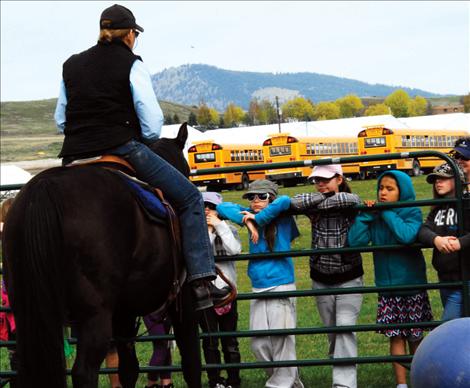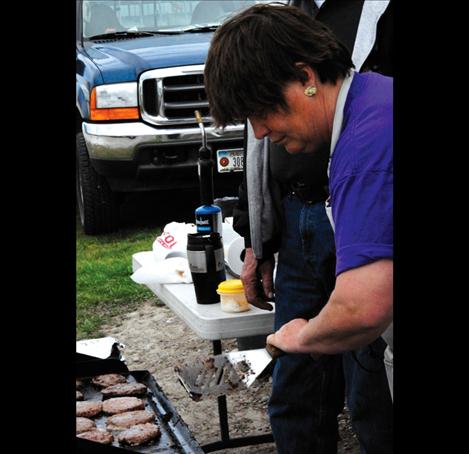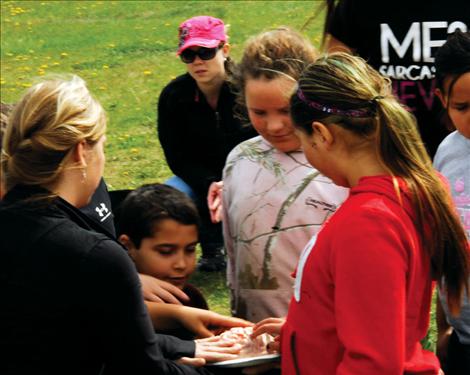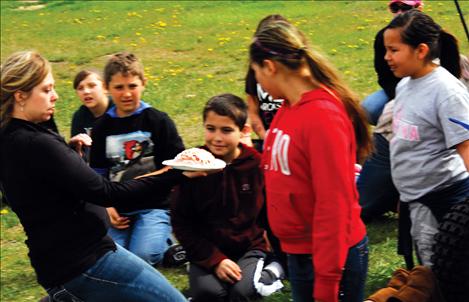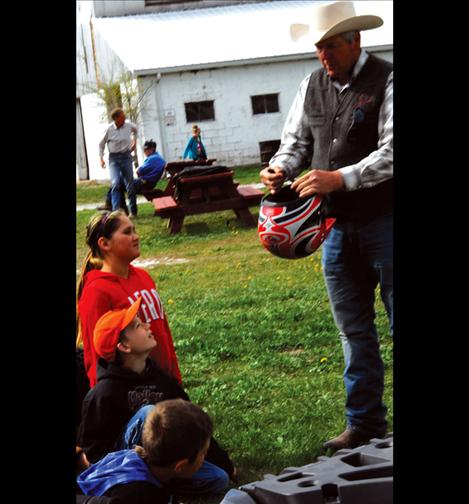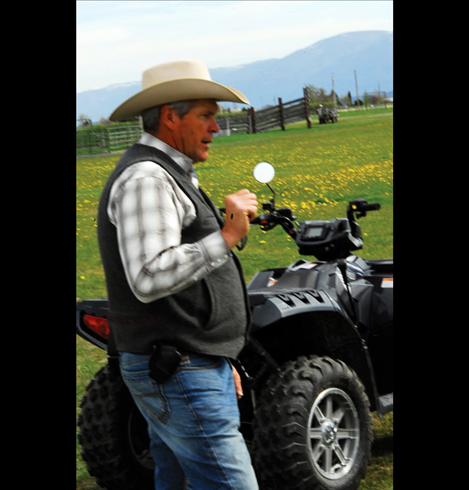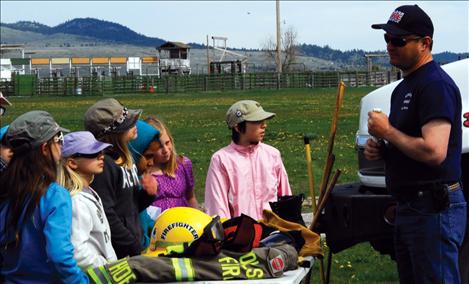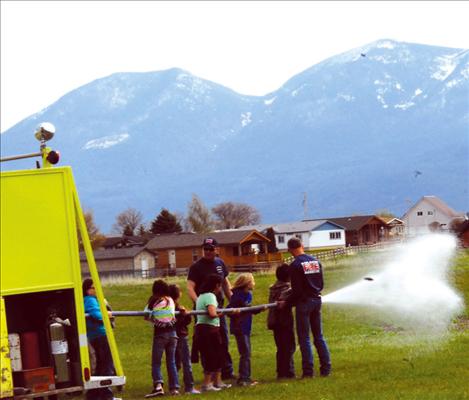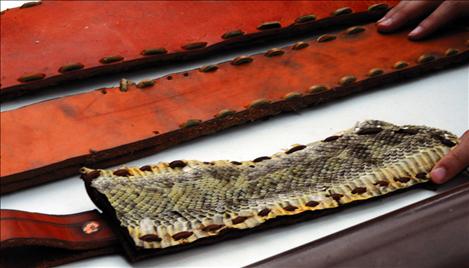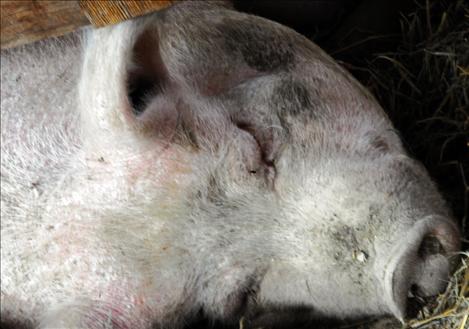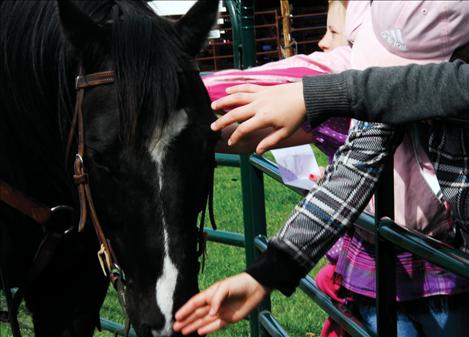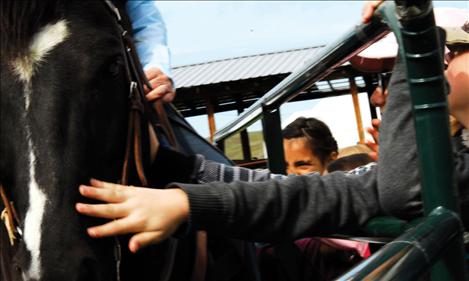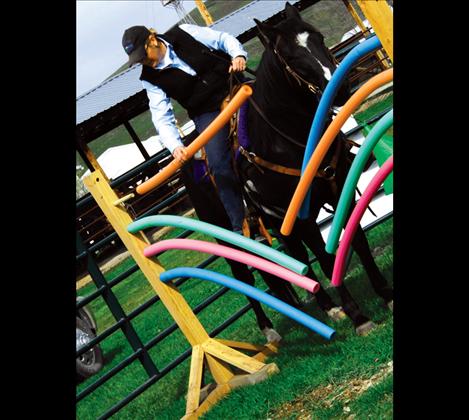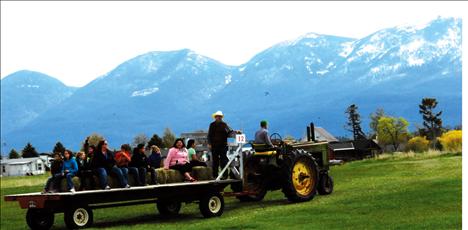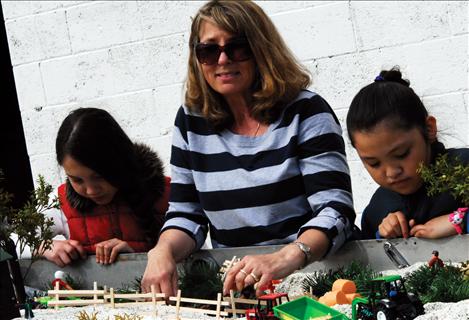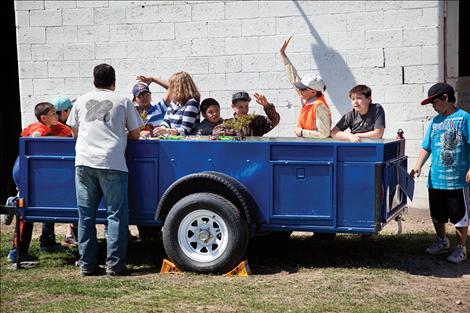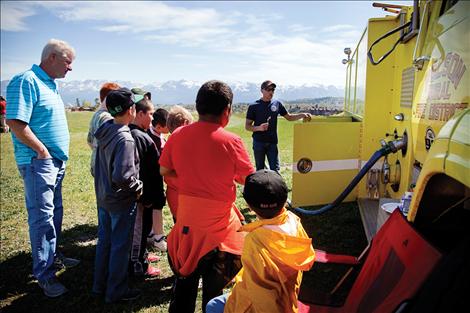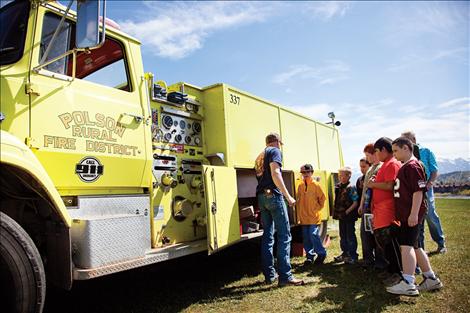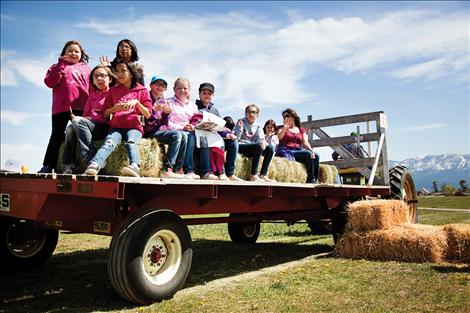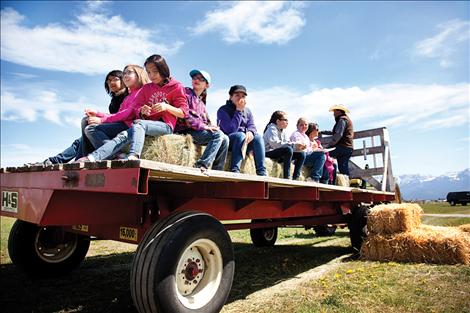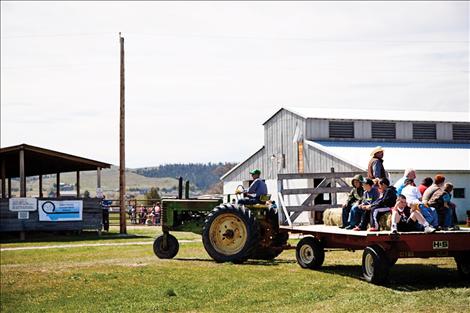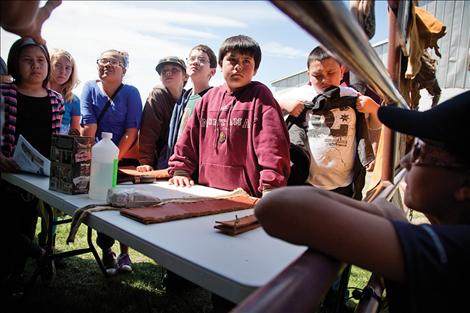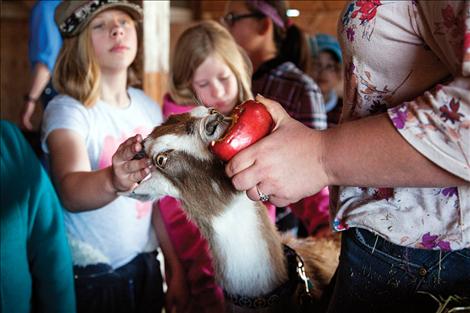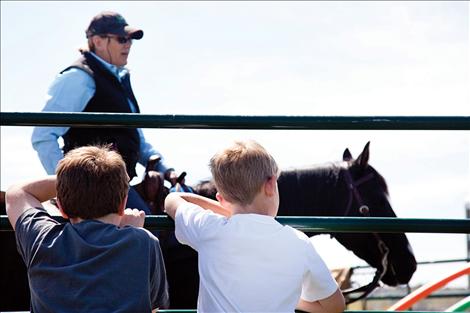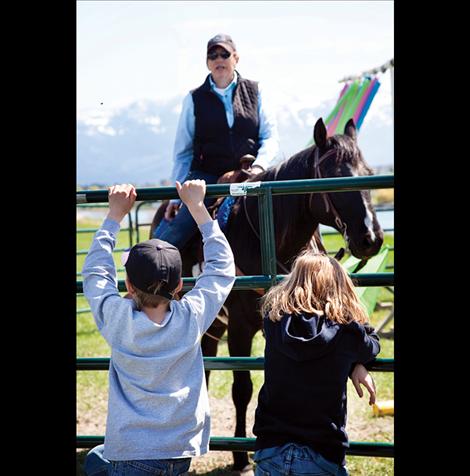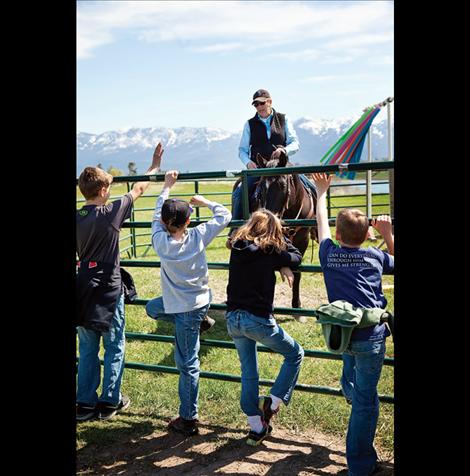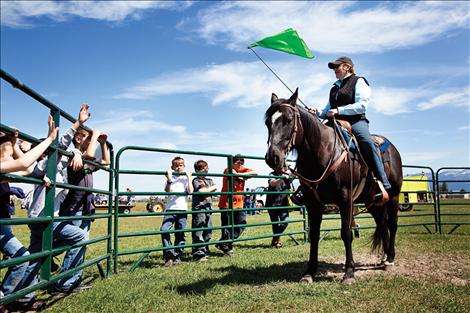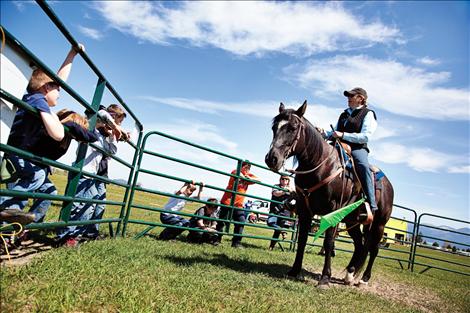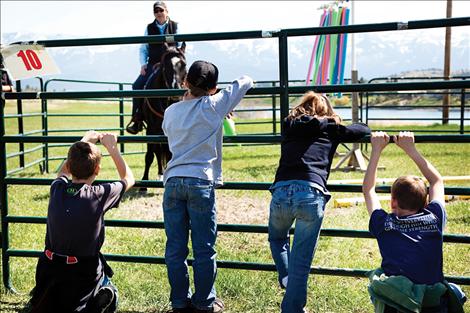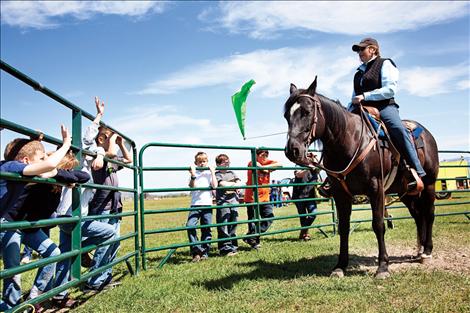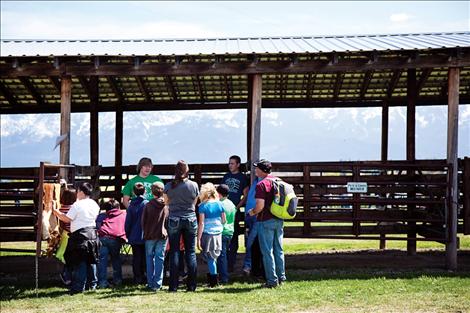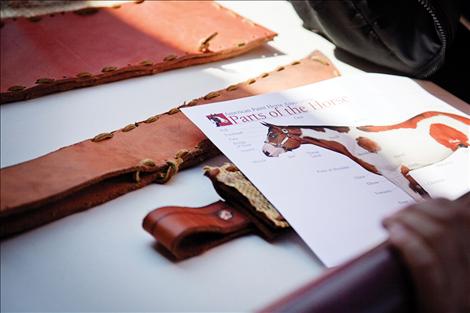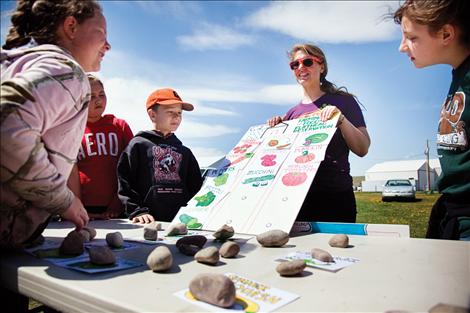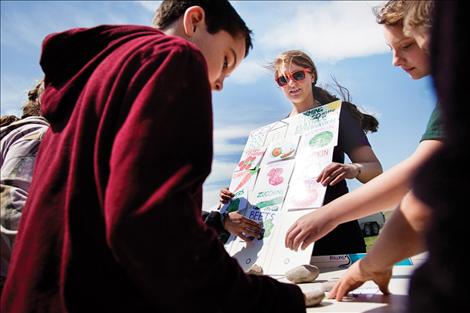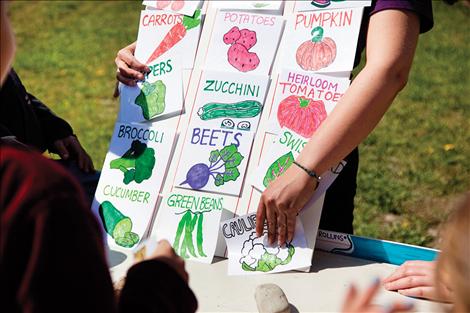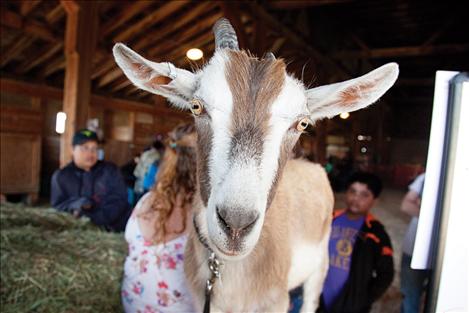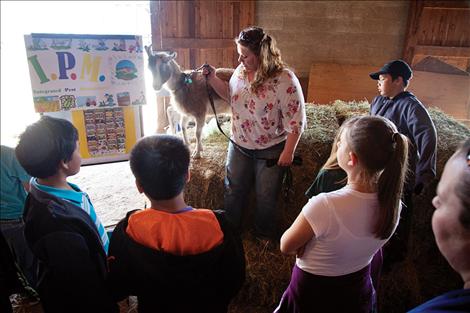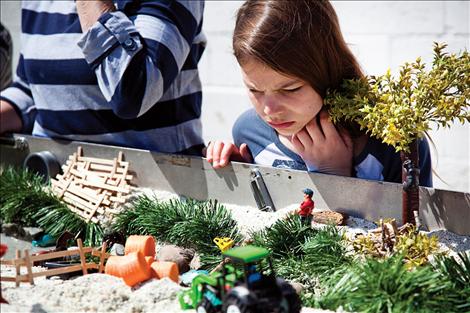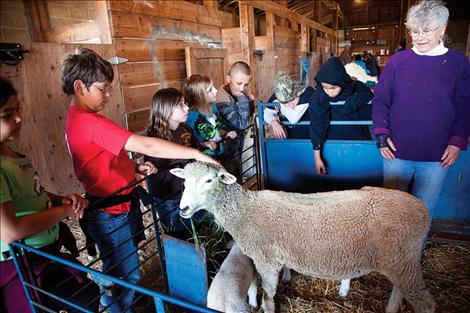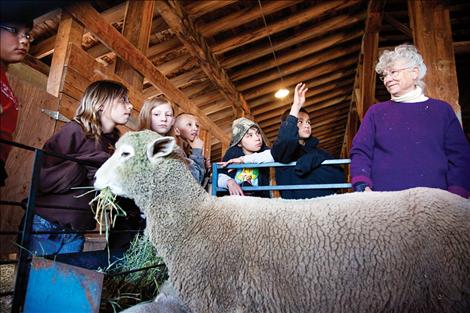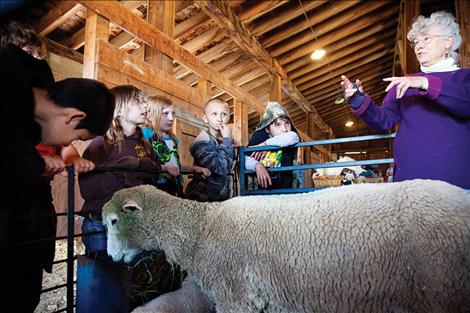Ag Days teaches valuable lessons
Hey savvy news reader! Thanks for choosing local.
You are now reading
1 of 3 free articles.
The 500-pound sow snored delicately, twitching one fuzzy pink ear in her pig dream. Fourth graders from Ronan walked around the corner and up to where the sow’s nose peeked through the stall boards.
“Should we wake her up?” one kid asked.
Then the students reached down to scratch her back, covered with coarse white hair.
Diane Krantz, who brought two pigs to Ag Days, said the Yorkshire sow’s name was Della and her red bunkmate’s was Babe.
The Lake County Conservation District puts on Fourth Grade Ag Education Days to build an appreciation for the agricultural community in Lake County, according to Jim Simpson, chair of the LCCD.
“Kids today, the vast majority of them don’t know much about agriculture in Lake County,” Simpson said.
About 300 fourth graders from Pablo, Polson and Ronan spent most of a day at the Polson Fairgrounds on May 1 and 2.
Chris Malgren, LCCD District Manager, said it was the first year in 24 years she had people volunteering for the event.
She also thanked Polson Fairgrounds, Inc. for allowing the LCCD to hold Ag Days at their facility. The fairgrounds was a great venue, Malgren said, closer to town and with lots of space, and PFI members had been so helpful.
Students, teachers and a few parents spent about 15 minutes at each of the stations, learning about agriculture and its many facets in Lake County.
Dude, the goat who eats noxious weeds, was on hand to charm kids while his spokeswoman from Integrated Pest Management talked about alternatives to pesticides.
Thanks to Ronan Power Products, Craig Blevins had two All Terrain Vehicles and helmets to explain ATV safety to the students. Blevins also prepared a “brain,” formed in a mold. The brain was the same consistency as a person’s brain, and kids could see and gently touch to see how fragile their brains are within their skulls, underscoring the need for helmets.
Blevins said there are 17 deaths each year in Montana from ATVs and motorcycles.
Susan Gardner, a LCCD supervisor, didn’t have ATVs to interest the children. She brought something just as good — a ewe with fuzzy twin lambs. As well as admiring the lambs, the kids learned that sheep produce wool, something they might have known. Faced with a sheep, mounds of raw, lanolin-laden wool and sweaters and other items made from wool, the students made the connection between animals and woolen items that keep them warm.
Dairy cows don’t keep people warm, but they do produce milk and cream, which is pasteurized to drink or made into yogurt, sour cream, ice cream and other dairy treats. Jeff Nelson brought some models of different breeds of dairy cows and a milking machine. Kids always enjoy sticking their fingers in the milking machine to see how it feels to the animals.
Horses don’t produce milk for humans unless you live in Kyrgyzstan or other central Asian countries, but they do make life better.
Winston Churchill said, “There is something about the outside of a horse that is good for the inside of a man.”
Not only are they good companions and great for pleasure riding, but horses help cowboys move cattle, doctor sick bovines and compete in rodeos. Una Rose Graham, Toni Burton, LCCD associate supervisor, and Frank Galiardo explained about different breeds of horses and what their strengths are. In stalls, they had a quarterhorse, a paint horse and a Morgan for the kids to admire.
Jane Clapp brought her horse Smokey to town to explain some training methods. She also explained that horses are herd animals and there is a pecking order.
In a portable corral, Clapp showed students how she started training Smokey with a flag on a long stick. By rubbing the horse all over his body and under his belly, she prepared him for bushes or sagebrugh that might tickle his belly.
In the corral, she had swim noodles for the 14-year-old quarterhorse to walk through, a large ball to push and parallel poles for him to sidepass through. All these man-made items helped Smokey learn to trust Clapp and helped him with his job as a ranch horse.
Although horses didn’t pull the hay wagon, it is something that’s used on a ranch. Students sat on hay bales and enjoyed a ride around the fairgrounds, pulled by a tractor.
LCCD Supervisor Sigurd Jensen rode with the kids and talked to them about feeding hay to cows and horses, why feeding them is important and what sorts of grass make the best hay for livestock.
To protect those cows and horses and the ranches they live on, the Polson Fire Department brought a fire truck. Led by firefighter Drew Hoel, the firefighters showed the kids the trucks, talked about the differences between structure and wildland fires and showed kids their firefighting gear.
They also had students pull out and hold the fire hose as water gushed through the hose.
Water not only extinguishes fire, it also helps gardens grow.
FoodCorps service member Nicki Jimenez had students choose vegetables to plant in a “paper garden.”
Vegetables such as beets, chard, peppers, squash, lettuce and corn ended up in the garden.
Fresh food you grow yourself or buy at the farmers market is better and helps kids grow up healthy, according to Jimenez.
Healthy kids also need to be smart kids, so Larry Robertson used an apple to explain about the world. He cut the apple so kids could see what portion was oceans and what portion was arable ground that could produce food.
Since healthy kids also need to have fun, Robertson held worm races at his table.
Keergan and Landar Fangsrud had something almost as good as worm races at their table; they had a knife scabbard made of rattlesnake skin. As 4-H members, the Fangsrud boys learned leathercraft, but then they took it further and learned to tan leather and make useful items from that leather. Displaying a deerskin and a cowhide with the hair still on, the young men showed kids another niche in agriculture.
Plants, animals and people need water to survive so LCCD Vice Chair Zoe Liljah and LCCD Associate Supervisor Carlos Rodriques brought the LCCD watershed trailer. It’s always a favorite for kids.
Two Pablo girls said it was sort of like playing in the dirt, with its stream of flowing water, tiny animals, houses, trees and machines.
Rodriques asked how many kids had been out in the woods cutting firewood. After a few kids raised their hands, he asked what to look for when a tree is selected.
Lilja brought the kids’ attention to a toy tree topped by a bird’s nest. When the tree toppled across the stream, the kids were asked what happened to the bird.
The kids were constantly challenged with common sense questions.
What happens when pink plastic pigs are in the stream?
Kids’ answers ranged from “they get the water dirty,” to “they root around.” No one said the pigs went to the bathroom in the water.
Rodriques asked, “how would that affect the fish in the stream?”
To break up the day — or for some kids, to make their day — the LCCD provides lunch, including barbecue burgers from the Montana Beef Council cooked by Beth Blevins and Chuck Lewis, potato chips and apples provided by the Ronan and Polson Chambers of Commerce, milk to drink and ice cream bars for dessert furnished by the LCCD.
It’s a great day, the kids said, and they wish they didn’t have to go back to school since it was so nice outside.
The exposure to agriculture might make kids think more about how they get their food and warm clothing, or perhaps they’ll choose an ag career.















